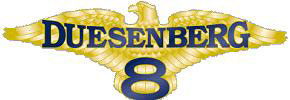The substrate is not the issue. The washcoat is the issue. The washcoat bonds the palladium and platinum to the substrate. Every industry uses washcoats and believe it or not, 1600F of repeated exposure is what causes the flattening out. It doesn't happen immediately but over several exposures.That's got me thinking... if substrate flattening is the thing that eventually kills almost all (steel) cats- 1) A completely "dead" cat is still able to function at whatever the ratio is of surface area between a new one and a flat one, and 2) We could just start with a flat substrate if we had enough surface area to begin with. (Though it seems like the cat might be bigger than the stove in that case, and imagine taking THAT apart to clean it...)
So 3) Isn't there a higher-temp substrate out there? Maybe a rough ceramic surface would have sufficient surface area that we could just double the size of the cat and not suffer flattening?
Somebody write me a research grant!
As to the purpose, it isn't just surface area, which is of course key, it also creates turbulence, although minor. The cat manufacturers are very eager to find washcoats that would have higher thresholds temps and have been so for decades. You find one (materials & application process) you can probably sell them your idea.



![[Hearth.com] 2021-2022 BK everything thread [Hearth.com] 2021-2022 BK everything thread](https://www.hearth.com/talk/data/attachments/287/287510-137206954aa712d8c1652e94d14d2f25.jpg?hash=NRzFZUpia1)
